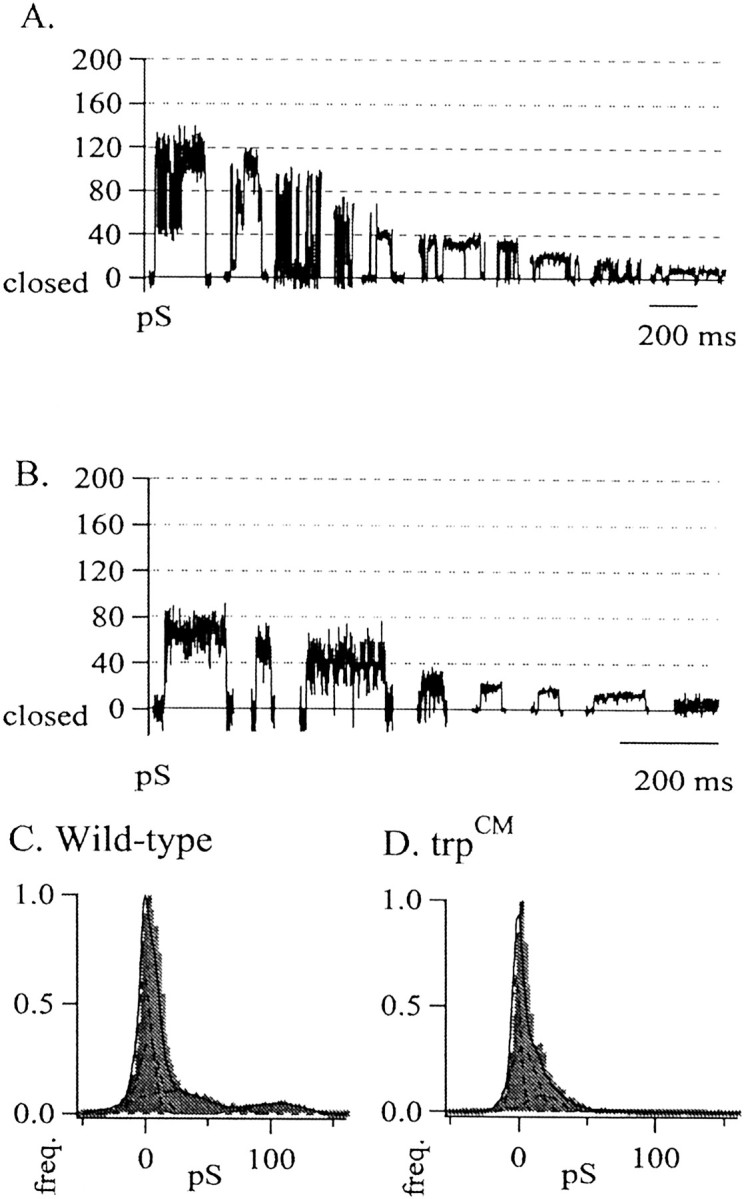Fig. 2.

A, Ten individual events selected from 10 different excised patches from wild-type isolated rhabdomeral membranes, plotted in descending order of conductance size. Open state level is upward in each case. Ba2+ in the bath was 10 mm; Ba2+ in the pipette was 1 mm. Conductance values were calculated asg = [I/(Vhold −Erev)], where g is conductance in picosiemens, I is measured current amplitude, and Erev is the reversal potential for each patch, as determined for each individual patch by the slope of the current plotted for multiple holding voltages. All conductances were permeable to barium as determined by the reversal potential of the activity (Erev= 24 ± 6 mV; n = 12). The calculated equilibrium potential for Ba2+, the only permeate ion in our solutions, was +29 mV. B, Eight individual conductance events selected from eight different excised patches taken fromtrpCM isolated rhabdomeral membranes, plotted in descending order of conductance size. C, D, All-points conductance histograms show marked differences in the distribution of conductances observed among all wild-type (C) and trpCM(D) excised patches. Conductance values were determined separately for each patch by dividing the measured current by the driving force. All data from each patch were binned cumulatively, and the resultant histograms were normalized to the zero peak (the largest peak in each histogram) to highlight the relative contribution of each subsequent open state. Wild type,n = 12; trpCM,n = 8.
